Media | Articles
The 4 (actually 5) levels of tool organization
Free time is not free. Free time comes with working efficiently, which minimizes the time needed to get the finished product you so desire. You could ensure your tools are all in the garage, suggesting they are technically all in one place. But nothing is more infuriating than spending five minutes wandering around the garage to find a tool you only need for 30 seconds. And then repeat it again for another misplaced item. It can literally drive a person mad.
On the other hand, there are people who genuinely believe organization is just a waste. Everyone works in their own ways, so we aren’t about to suggest anyone is wrong for keeping their tools how they please. But, with an interest in organization in mind, here are the four levels of tool storage you will likely encounter if you visit enough garages.
Level 0: I have one of those

You are elbow deep in a water pump swap at your friend’s garage when you realize you need a shallow 6-point socket on an 3″ extension. You friend looks at you and says “yeah, I’ve got one of those” and then starts picking up various items and projects on their workbench. Your automotive repair has now turned into a game of “I Spy: Garage Edition.”
We all get caught between projects from time to time, or something of high-importance rolls in and requires pausing something you were actively working on. We how these situations come to life. But if this is your modus operandi, perhaps it’s time to upgrade and quite literally get your poop in a group.
Level 1: It’s in the box somewhere
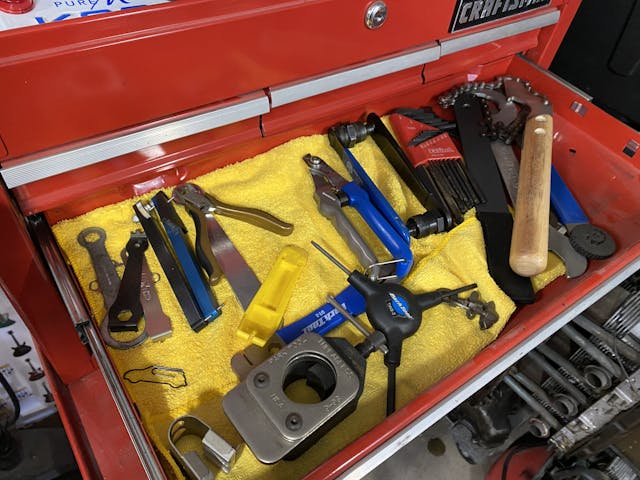
We have now advanced to the most basic level of tool organization: Having everything contained in one place. But the tools are loose and haphazardly mixed. Sockets and wrenches require picking up and turning to see exact sizing, as if denying that the two options of standard and metric exist. You are no longer walking about the garage searching for things, but still pulling drawers like a cabinet maker looking for that jig he knows he made back in 2011.
Marketplace
Buy and sell classics with confidence
Not everyone needs to take out a second mortgage to have one of the tool trucks drop off the latest and greatest toolbox, but having one place for your tools is the best course of action if you own tools. Heck, most tool kits these days come in blow-molded packaging that can be downright annoying in some situations, but it undeniably keeps things together and halfway organized. The various ratchets, screwdrivers, saws, and hammers we accumulate with time last longer and work better when properly taken care of and not left in the dirt, or on the floor. (Or in the saltwater marsh that forms underneath anything I park during the winter.) Tools also work best when they are not lost. A tool in the hand is worth… five on the shelf?
Level 2: It’s in that drawer
The chaos in now reduced to a smaller space! The drawers wear a label describing what’s inside, and those items are returned to the same place. You still have to poke around to find exactly what you need, and it might even be a little tougher since everything in the drawer is the same type. Need a half inch box wrench in a drawer full of box wrenches? That’s just annoying.
I suspect this is the level most DIY and at-home mechanics operate on, mostly because it is the easiest to maintain. Clean up only requires wiping a few things down and then tossing handfuls back in the prescribed drawer. The time spent finding something is saved by how easy it is to put back. If you value your time at zero or know your tools extremely well, this is a relatively acceptable way to operate.
Level 3: It’s on a rail, in an organizer, or otherwise sorted
To most, this is the level that is considered “basic organization.” The toolbox now uses dividers in its drawers, or various fixtures to attach like-minded tools together. This creates an environment that makes for quicker locating of tools while working on a project. This level of organization also makes it easier when working on something new, or a project with mixed fasteners: I’m looking at you, American OEMs that mix metric and SAE fasteners.
When sockets are mounted to a rail, you can grab the whole rail and take it to your workspace, instead of making multiple trips to get the right size for the task. The rail also ensures sockets will not roll away while performing automotive yoga under a dashboard. Nothing hurts like watching something roll (or fall just out of reach) while literally shoulder-deep working on something. But sockets on rails can’t roll.
Level 4: It’s right there, and I can tell immediately if it’s not
For neurotic wrench turners, there is the ultimate in organization: Custom cut foam. It’s commonly referred to as Kaizen foam, but that is like calling all nose-blowing tissue a Kleenex. This is a multi-layer foam that can be sliced into, then pulled out in sections to exactly fit various tools or parts. We think it might have jumped into garages from the camera and film world, because this foam is great for packing delicate items into travel cases.
Each layer is 1/8″ thick, so it is as simple as tracing the tool you want to store, setting the depth of your knife, cutting the shape (while ensuring you keep the knife vertical), and removing the now-released foam. Bingo: you now have a perfect pocket for cradling anything you can imagine. And as a bonus, most of these foams have one color on top and a different color in the middle layers, allowing you to sight-check if anything is missing.
The idea of tool organization is likely as old as tools themselves, which means the cost to keep your toolbox tidy has dropped over the years. Time is money, and your time is not free. Socket rails and organizers are things that we can say with 100% confidence are worth a trip to Harbor Freight.
So where do you fall in this hierarchy, and do you want to see more tips on keeping your box organized and ready for work? We may have a few tricks that are cheap or free that we could be convinced to share, but only if you promise to not be a level zero organizer. Don’t worry, we’ll take your word and won’t ask for proof.
***
Check out the Hagerty Media homepage so you don’t miss a single story, or better yet, bookmark it. To get our best stories delivered right to your inbox, subscribe to our newsletters.
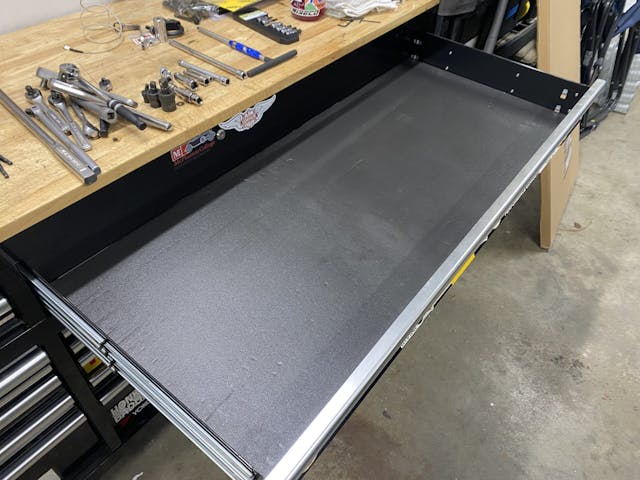
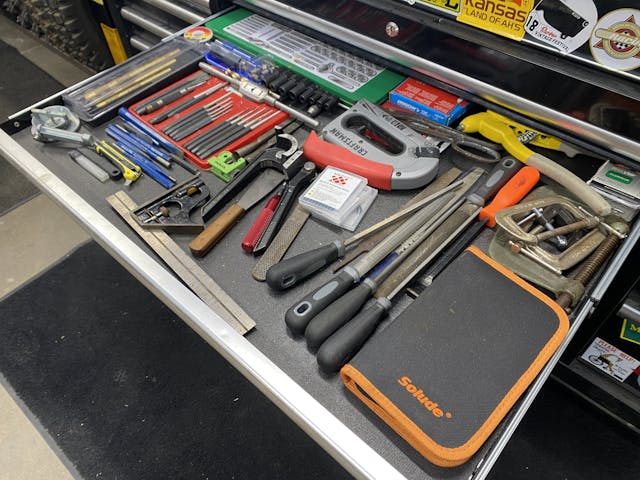

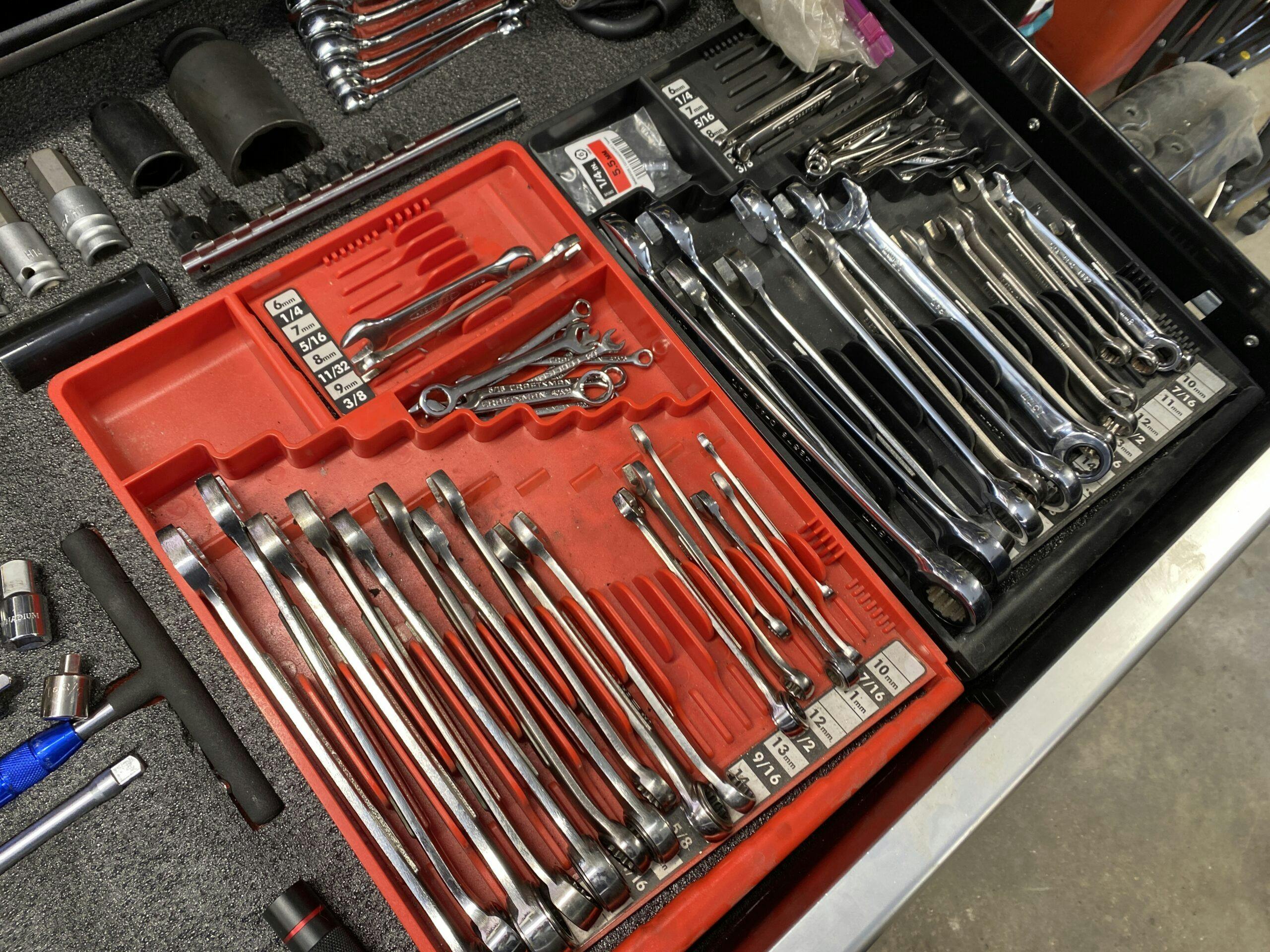
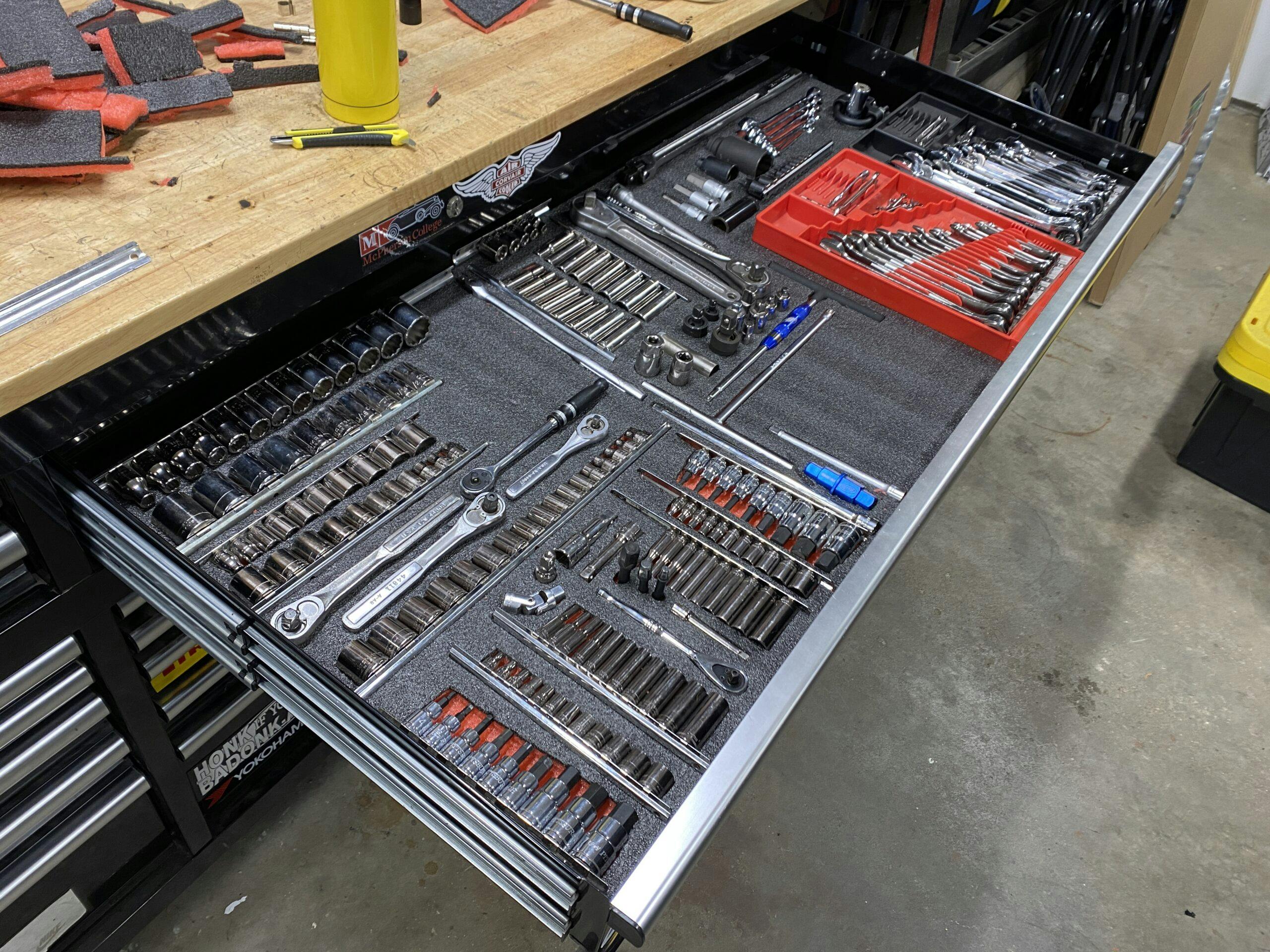







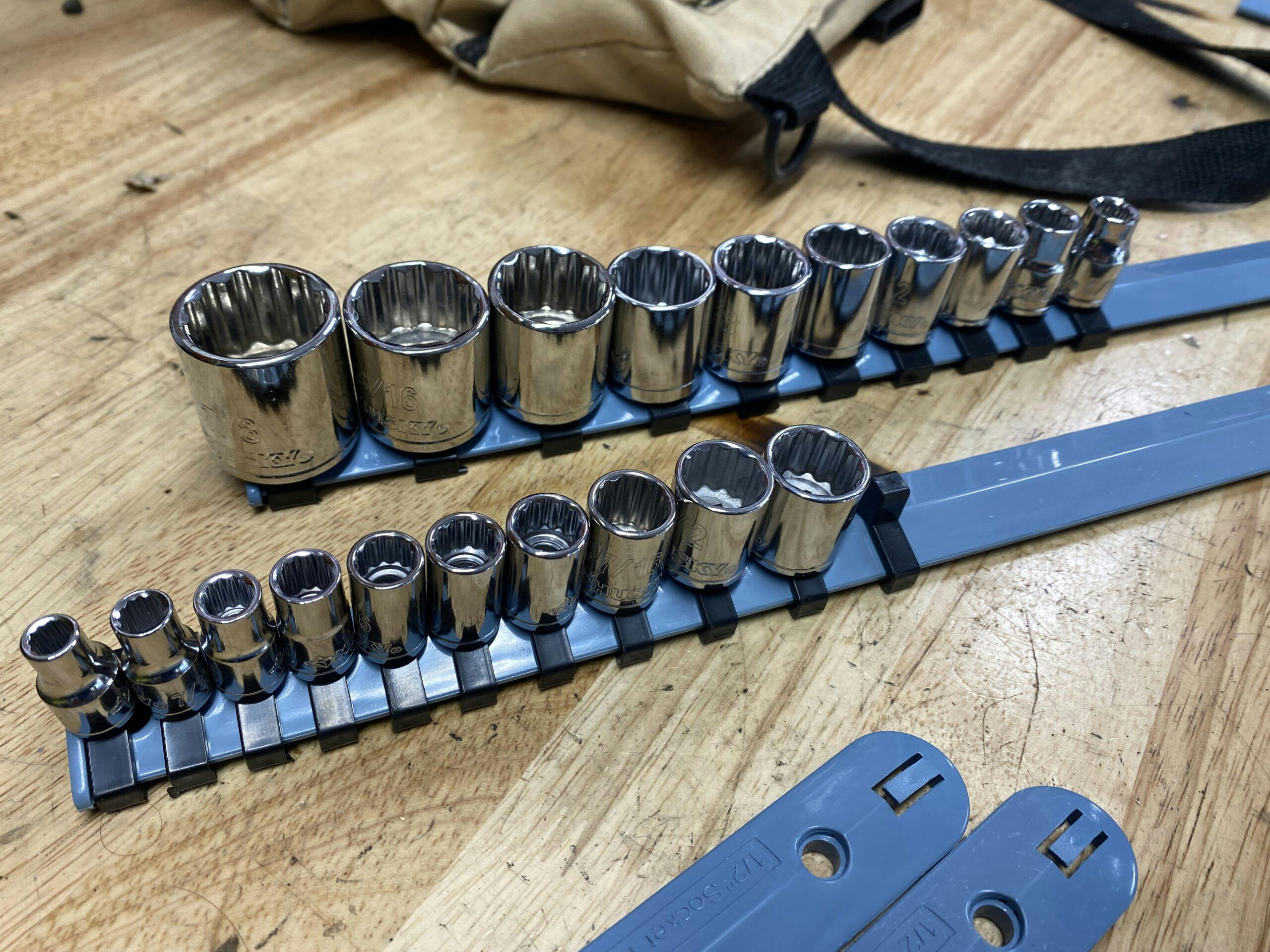
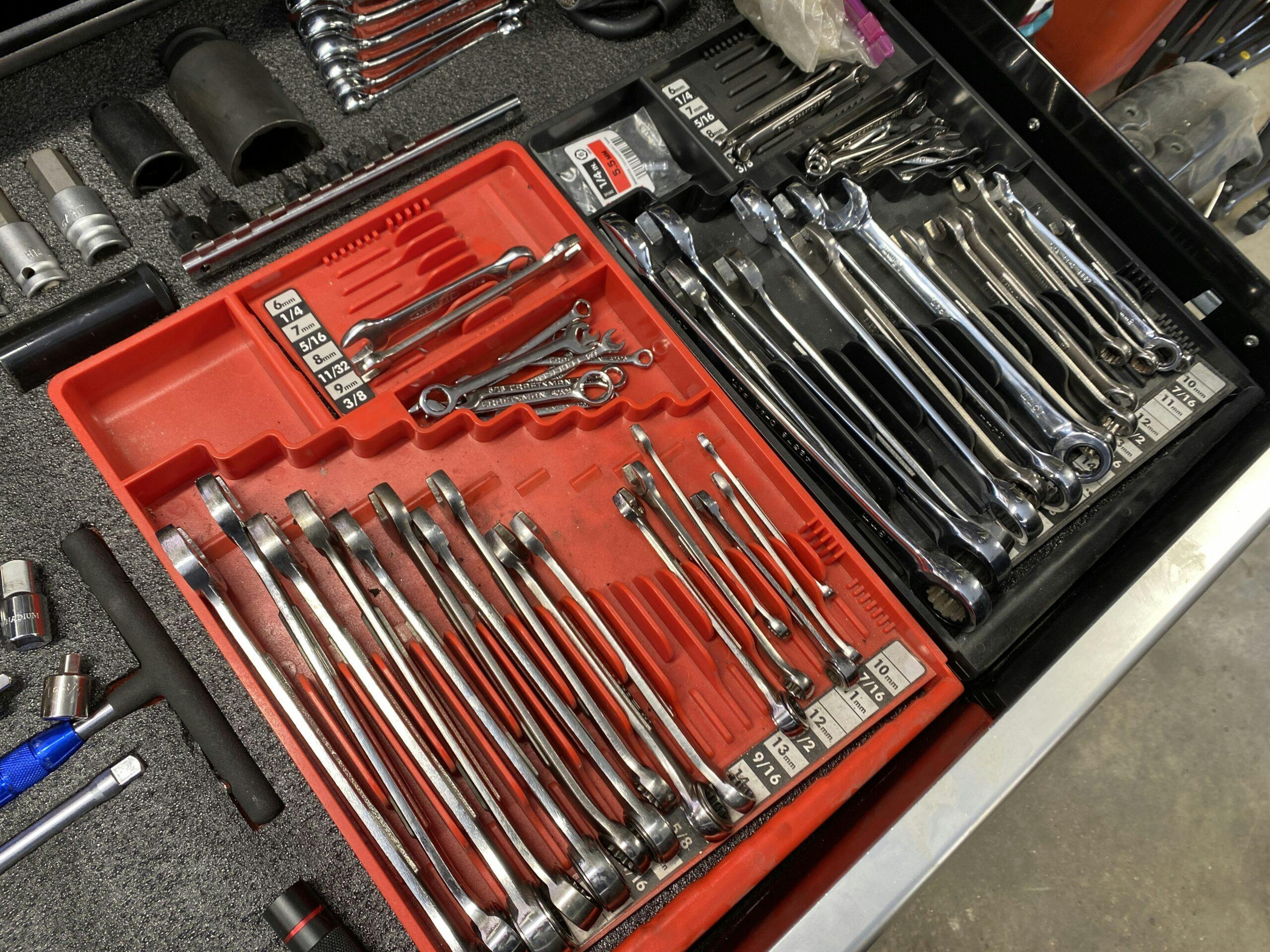


Level 3. All the toolboxes all the time.
Levels 0-3 are a matter of discipline, experience, planning. Level 4 is all money. Level 4 requires 3 times as much space. That space is coming in the form of drawers that someoine has to pay for. So, yeah, when I win the lottery…and when it comes down to it, I’d rather have a nicer project or more tools than more drawers.
Had a friend eons ago that used black-painted pegboard and hung everything very meticulously. He then sprayed the whole board (with tools attached) with bright yellow paint.
End result was you could see where everything belonged, if it was missing, and where is was in the shop (if the painted side was facing up)
Yup, it was a pain to revise the layout, but he was an oldtimer, and rarely did anything different in his life.
Just converted to the vert post mount socket organizers(Summit), they have the size printed on the post top and the sockets slip off and off/on one handed, had rails that took 2 hands…..which is always a pain
Good if you roll your box over to your work, not as good for ‘carry to’ locations.
My level of organization varies with what project is happening. At rest my shop is neat with sockets on rails, most wrenches in racks or rolls and other stuff is specific drawers, including the hammers in the one labeled “Jezza’s Tools”. Once I get into a big project entropy sets in and sockets and ratchets and other bits are all over until I call time and make neat again.
Im ideally a 3 but often become a 2 by the time I start getting OT. I love the foam idea but often change drawers around so I’m not sure about that
Interestingly, levels 1 – 4 assume that a drawer is the default solution for tool organization. I believed that for decades, but I tired of searching for tools in drawers and reorganizing drawers. So above my primary workbench and below the upper cabinets I now have a wall of metal pegboard and tool organizers/racks which allows most of my frequently used hand tools to be visible at a glance – if I am diligent about putting them back up… 😉
Metric and SAE sockets, rachets and extensions are in racks on the wall. Metric and SAE combination wrenches hang from another pair of racks. Screwdrivers, sliding t-handle Allen wrenches, nut-drivers, pliers, vise grip pliers and hammers each have a rack. Overflow tools are in labeled drawers in the cabinets below the workbench at a level 2 or 3. Maybe someday I’ll spend the $ and time to make some of them level 4, maybe… but unlikely as I just don’t believe I use them regularly enough to justify the $ & effort.
You know you might be a 0.5er like me if you’re mowing your lawn and you find a lawn mower.
Personally, I am level 2.5. Each drawer contains tools of like function; i.g., measuring, sockets, wrenches, air tools, etc. My father liked pegboards but I never did – takes up too much wall space and hard to re-organize. But at least he did not outline the tools on the board. However, he did complain about tools not being put back in their proper place (5 kids!).
He might not be a mechanic, but a Level 5 would be H.O. Studley and his specialized tool chest that he made himself. https://mymodernmet.com/studley-tool-chest/
That is an amazing tool chest, one that was once displayed in the Smithsonian…
That is just too cool. Thanks for sharing, I very much agree that to be Level 5!
After years of grabbing all the likely tools for a job, I have now learnt to check the sizes of the fixings before starting the job, and just extracting the necessary tools. I am pretty sure this saves time and prevents me from having to crawl out from under the car five times.
If a couple of 5-minute searches “can literally drive a person mad”, might I suggest that that person had a tenuous grasp on sanity to begin with. The word “literally” is much abused. Great article though. I’m a solid 2 1/2.
I’m a nominal Level 2 with a couple drawers at Level 3; definitely “Level 4 curious” though. Confession time – I have a pile of stuff on the floor infant of the tool chest that is definitely Level 1 – but that is something I intend to remedy once we move to the new house with a separate workshop from the main garage.
“Sockets and wrenches require picking up and turning to see exact sizing” Whenever I can, I take the opportunity to lament that sockets aren’t size labeled in/on more than one place of their periphery. When are socket manufacturers going to realize that the side with the markings are not always facing up; put the damn size in 3 or 4 places around.
I am and will remain at about a two and a half. I still have my first tool, a 7/16 open end given to me by my Father in 1956. But the best part of this article is reading the comments, very entertaining.
Level Six here. If someone simply opens and closes a tool drawer without actually taking anything, I can still tell. I can’t work if I can’t immediately get to a tool or part I need, so organization (and cleanliness) is paramount.